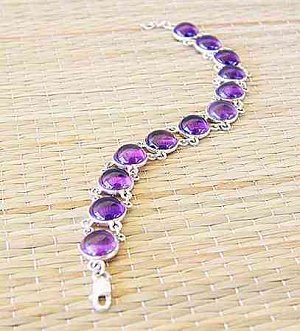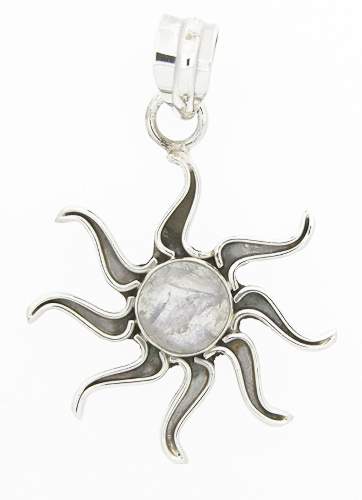| October Special: orders over $150 get a $7 shipping credit! |
|
||||||||||||||||
|
20% Discount
in September? I was all set to explain that the 20% off sale was over when I noticed she referred to our newsletter as the source of her expected discount. I checked the email and realized I hadn't changed the special completely, thus inadvertently offering 20% off for the whole month of September. There was nothing else to do but offer a 20% discount for September! There are still a few days left, so if you didn't catch my typo in the last newsletter there's still time to take advantage of this normally semiannual sale. Just order over $150 in merchandise and the discount will be applied to your cart automatically. In October I am traveling to Indonesia. Mostly it is a surf trip: I will be on a boat with 5 other surfers for ten days as we search out little-known surf spots on some small islands off the coast of Sumatra. At the end of my trip I'll be spending some time in Bali buying new products for the Holiday season. I haven't been to Bali before, but I have a good resource for suppliers so I am very excited. Look for new silver jewelry with that typically-Indonesian handcrafted detail towards the end of the month. I'll also be chasing down textiles, if I can find some nice ones at good prices. Also arriving soon are some great new Vietnamese purses. They are in the air right now, so look for them toward the end of October. Since I am leaving before the end of the month, I won't know what the final donation to the Habitat for Humanity Katrina relief effort will be until I return. I would like to thank each of our customers for your purchase in the month of September. As you may recall, we have pledged 10% of our September profits to help rebuild after the devastation of Katrina and now Rita. There is plenty to see on our site for the month of October. We have restocked many of our best selling items, so if there is anything you were unable to order because it was out of stock, please check the site. Article:
Western Silversmith History Silver as adornment predates modern history. It was already being separated from ore by 5,000 BC. Several ancient civilizations are known to have attained a high degree of proficiency at working this magic metal. It was long thought that the Greeks were the first true masters of silver and gold smithing, but that changed in the 1920's when the tomb of the Mesopotamian Queen Pu-Abi was unearthed revealing an elaborate filigree knife sheath dating from 2600 BC. Filigree, a technique of working with fine filaments of silver to form elaborate designs, takes years to master and requires a high degree of sophistication. The filigree on Pu-Abi's sheath, as well as other fine examples found in the tomb of Tutankhamun, prove that the art of silversmithing had been practiced and refined for an extended period prior to 2600 BC. After the Mesopotamians and Egyptians, the Greeks continued to evolve and refine the art of silver manipulation, applying their own tastes and techniques. Typically, traditional Greek jewelry featured sculptural renderings of natural forms, similar in content to their classical statuary. With the rise of their empire, the Romans drew much of their skill in working precious metals from techniques perfected by the Greeks. The similarities between Greek and Roman jewelry end with the craft. In style, Roman jewelry making tended to be based on the use of color, as in semiprecious stones. Designs were simpler not because of a lack of ability but rather because the Romans preferred the look. As the Romans spread their influence throughout the Empire, the art and craft of silver work, like so many other trades, was transferred to far off lands. The Celts produced highly stylized jewelry in silver and gold from about 500 BC to 500 AD. Their intricate knotwork designs were highly prized and traded throughout the Mediterranean. The influence of Celtic design can be seen throughout the Middle Ages in the work of Irish monks and artisans. Celtic motifs in jewelry have become a sort of subculture unto themselves, with whole companies dedicated to the production of this genre. Many of the traditions associated with the Egyptians and Romans, filigree as an example, were lost with the advent of Rome's decline. It was not until the late Medieval period that their technical prowess was rivaled. As European civilization emerged from the Dark ages, jewelry making and the wearing of precious metal objects became more popular. With the rise of the merchant class, starting in Venice then spreading throughout Europe, the nobility imposed restrictions on who could wear jewelry and of what type. Fearing they would be upstaged, Europe's ruling class forbade the wearing of jewelry that would be considered "above their class" by non-royals and specifically the nouveau-riche. With the Renaissance, art of all forms flourished. Jewelry making attained a diversity and technical merit not seen in over a thousand years. The appetite for precious metal jewelry kept pace with important new gold and silver sources in the Americas. While the level of production of gold and silver had remained mostly stagnant or even declined after the fall of the Roman Empire, production of ore increased dramatically once the rich mines of South America were more fully utilized. After the Renaissance, jewelry making went through various periods that define popular genres. Whereas previous eras of jewelry making are referred to by culture or regional reference (i.e. Egyptian or Celtic), jewelry of the post-Renaissance takes on a more trend oriented identification. Think of Victorian, Art Nouveau or Retro period pieces. In addition, new manufacturing techniques and refinements make for mass production on a scale never before seen. Art meets innovation via the Industrial Revolution. Today, the idea of artisan crafted jewelry is not lost. Like most labor-intensive economic activities, the production of commercial jewelry has shifted to countries with lower costs. For the past decade or so, India, Thailand and Bali have been major sources of good quality silver and gold jewelry that is produced at a reasonable price. Currently, like so many other household items in Western culture, China is becoming a world player in the production of silver jewelry. The Chinese producers, though not of the same caliber of technical skill as the Indians or Balinese, have added thoroughly modern production techniques that combine the best of casting and hand finish work. We will undoubtedly see their dominance rise over the next five years as the Chinese more fully develop their skills in hand smithing, . And what about the traditional artisan of Western culture? They seem to have been relegated into three typical molds: the designer, the commercial artisan, and the hobbyist. Maybe these are the only three categories that have ever existed, but today they represent a small part of the commercial jewelry industry. Some lament the decline of traditional American or European jewelry craftsmanship, but rarely are their voices heard above the majority who crave more and ever cheaper. The
Easterling Theory: Highlights
of the Site Please let me know if you have any thoughts or suggestions on what we can do to improve. We are always open to new ideas and constructive criticism. Aloha, Mike McGinnis |
|
||||||||||||||||



